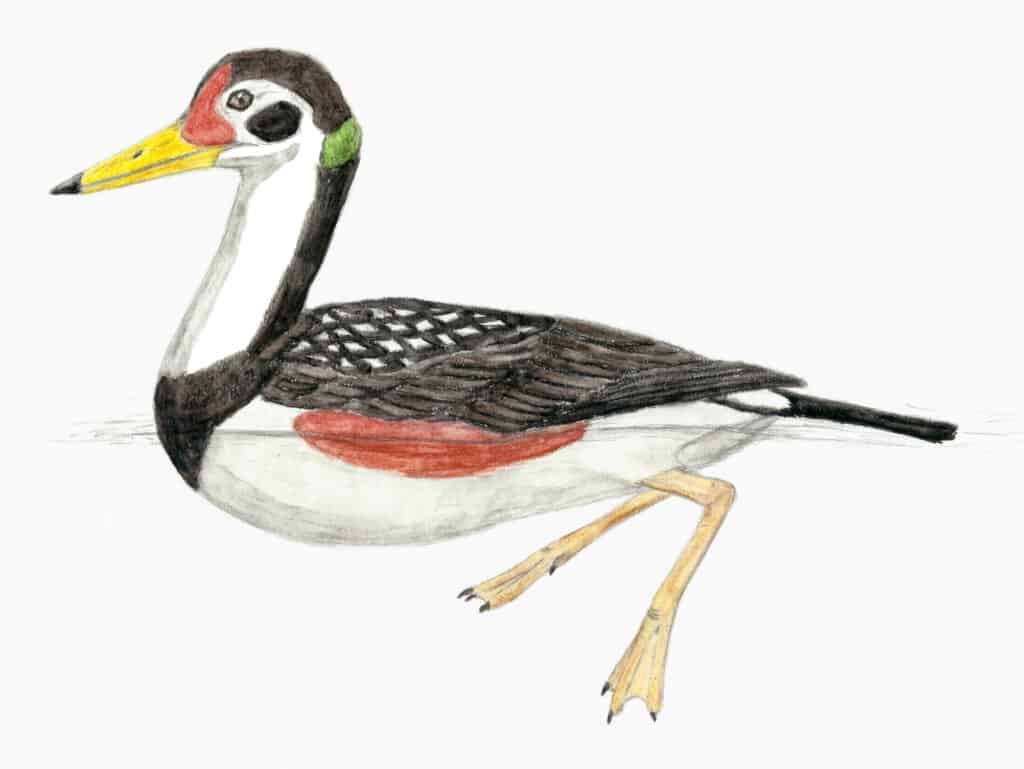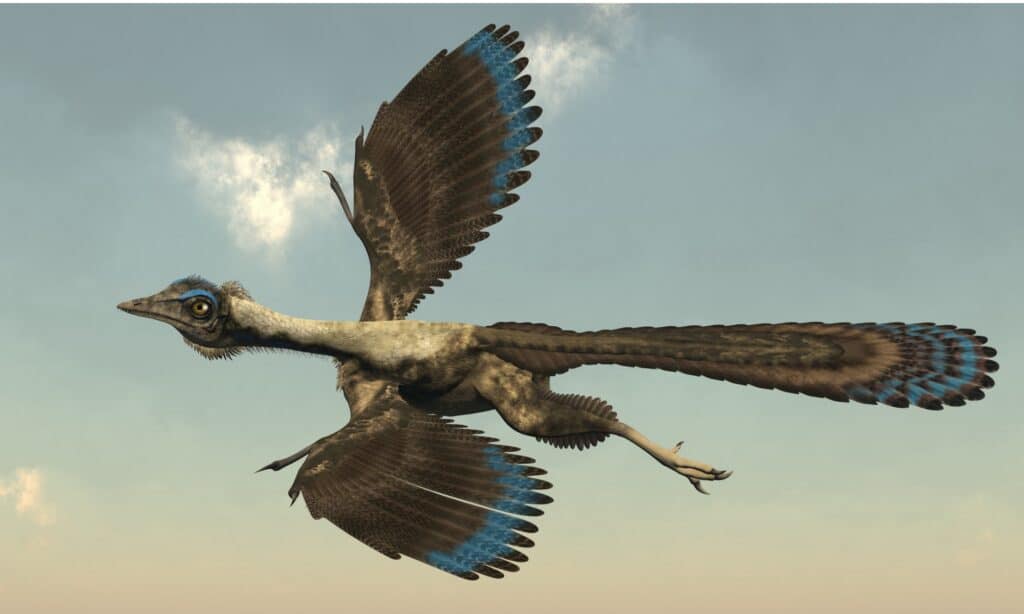Birds are among the most dominant groups of animals today. However, the evolutionary history of this unique class of flying creatures still needs to be clarified. The primary factor that has made the puzzle so difficult to solve is the fragility of bird bones. Their bones do not fossilize like those of other vertebrates. This has made it challenging to study the ancient duck and determine how it evolved.
However, every once in a while, scientists make a discovery that adds a crucial piece to the puzzle of the origin of the aves. One such essential piece in the puzzle is the Vegavis, a genus of ancient ducks that once roamed the earth with the dinosaurs.
The ancient bird Vegavis lived in a region that is now present-day Antarctica. This was during the Late Cretaceous, about 66 million years ago. They coexisted with the dinosaurs before the mass extinction at the end of the Cretaceous Period happened. The genus is an important evolutionary link because it shows us how modern birds evolved one of their major qualities, their ability to sing.
This genus of ancient birds had many distinct physical traits that are not present in living bird species today. For instance, it had teeth in its bony beak. Despite these differences, it is similar enough to modern birds to give us a clue into how they may have evolved.
Name, Species, and Classification

The Vegavis was a bird that lived in Antarctica 66 million years ago.
©El fosilmaníaco/CCBYSA4.0 – License
The genus name, Vegavis, refers to the location of the first fossil of this bird. The name was formed from a combination of “Vega Island” and “avis,” the Latin word for bird. The specific name “iaai” is from the acronym for Instituto Antartico Argentino (the Argentine scientific expedition to Antarctica).
Recent studies suggest that this ancient duck is a relative of a modern family of waterbirds, including geese and ducks. While genetic links exist between them, the Vegavis was not their direct ancestor.
Vegavis belongs to a family of animals known as Avialae (“bird wings”). This group contains many bird species that many scientists consider living dinosaurs. It also includes theropod dinosaurs that were closely related to birds. The bird-like dinosaur, Archaeopteryx, is one of the most popular members of this group.
Vegavis — Evolutionary Significance

Archaeopteryx is perhaps the most well-known early bird. It has features of both reptiles and modern birds.
©iStock.com/Elenarts108
Little is known about the Vegavis. However, the little we presently know about this ancient duck provides some important insights into the evolution of birds. Hence, this creature has major evolutionary significance.
Only two specimens have been found so far. However, these two discoveries have changed our understanding of prehistoric birds and how different they were from other creatures.
The Mesozoic Era is typically referred to as the era of reptiles. The evolution of birds started around 165 to 150 million years ago during the Jurassic Period. However, we now know that birds were also around for several million years during this period. The Archaeopteryx, a popular member of the Avialae clade, represents a vital transitional stage between birds and non-avian dinosaurs.
Vegavis appeared during the Maastrichtian Epoch about 68 million years ago. This bird’s presence is of major evolutionary significance because it provides the first proof that bird species closely related to modern birds were indeed present during the Mesozoic.
But there’s even more to learn about the evolution of birds from the Vegavis. Although the bird was first found on Vega Island in 1992, scientists made what would perhaps be the biggest discovery about this bird about a decade later. While studying a well-preserved bone of this bird, Dr. Clarke found a feature that looked like an asymmetrical syrinx.
Modern birds use the syrinx to make sounds; the type of sound often depends on the shape of this feature. While it is unlikely that the Vegavis could make elaborate sounds like modern songbirds, the fact that it could make honking sounds like a duck beats everything else.
Habitat — When and Where Vegavis Lived
Vegavis lived during the Late Cretaceous Period of Antarctica, some 66 million years ago. With its skeletal features suggesting it was a diving bird, the Vegavis was probably well adapted to life in the water as it was in the skies.
This magnificent ancient duck was discovered for the first time in the Lopez de Bertodano Formation at Cape Lamb, Vega Island, Antarctica, in 1993. The second specimen was found beside the first within the same formation. However, it was described as a new species in 2005 because it took some time to prepare the fossil.
Vegavis most likely thrived in high-altitude locations in Antarctica. Recent studies have shown that the bird had a high metabolism, and this would have influenced the kind of habitat that it lived in. It is important to note that the climate of Antarctica was a lot different in the Cretaceous than it is today. Antarctica was warmer at the time instead of being covered in ice as it is today. It had a rich temperate forest that supported a wide range of wildlife.
Scientists are uncertain of the specific threats or predators that may have terrorized the Vegavis. However, the relatively small size of this bird in a world dominated by dinosaurs means it was definitely preyed on by other creatures.
Scientists know little about the Vegavis’ habits, and their diet is uncertain. It had an enormous curved beak similar to that of the modern Ibis. The nature of their beaks suggests that this bird was probably a carnivore that preyed on fish. The bird was capable of diving into the water to catch fish. Also, if it was a carnivore, it probably ate worms, amphibians, and aquatic invertebrates.
Extinction — When Did This Ancient Duck Die Out?
The Vegavis didn’t face a lot of threats in its home habitat. The fact that it could fly and was well-adapted to an aquatic lifestyle increased the odds of its survival. However, Antarctica had its fair share of predators during the Late Cretaceous, including the giant sea mosasaur Kaikaifilu. This top marine predator may have attacked this ancient duck in the water.
Vegavis eventually went extinct shortly after the Cretaceous-Paleogene extinction. The exact time of the Vegavis’ extinction is unknown since there is limited fossil evidence to determine how long they were around. However, it is certain that they lived throughout the Maastrichtian Stage and survived the mass extinction that wiped out the dinosaurs. So even though this ancient bird lived alongside the dinosaurs, it most likely outlived them and still has close relatives living to this present day.
Similar Animals to the Vegavis
A study carried out in 2017 revealed that this ancient duck was a stem-anseriform. This would mean that it was an ancestor to a family of waterbirds with at least 180 species of living birds, including ducks, geese, and swans. The following are some other birds that may be related or similar to the Vegavis in some ways:
- Asteriornis — This is an extinct genus of birds from the late Cretaceous period. It was a small, long-legged bird closely related to birds such as chickens and ducks. Asteriornis is one of the oldest known extinct birds linked to modern-day birds.
- Ichthyornis — Ichthyornis means “fish bird” and is an extinct toothy seabird from the Late Cretaceous Period of North America. This seabird also shares an important evolutionary link to modern birds.
- Polarornis — This prehistoric bird lived during the Late Cretaceous. Many scientists consider this bird to be an ancestor of modern-day loons. Like the Vegavis, it was most likely an aquatic bird feeding on fish and aquatic invertebrates.
Up Next
- Discover the Ancient Predator That Came Before the Velociraptor
- 11 Ancient Mammals That Lived Alongside Dinosaurs
- Discover the Ancient Salamander So Odd Scientists Aren’t Sure How to Classify It
The photo featured at the top of this post is © El fosilmaníaco/CCBYSA4.0 – License / Original
Sources
- Washington Post, Available here: https://www.washingtonpost.com/news/speaking-of-science/wp/2016/10/13/66-million-year-old-bird-fossil-is-the-oldest-squawk-box-ever-found/
- Wikipedia, Available here: https://en.wikipedia.org/wiki/Vegavis
- New Scientist, Available here: https://www.newscientist.com/article/2151059-geese-like-birds-seem-to-have-survived-the-dinosaur-extinction/
Thank you for reading! Have some feedback for us? Contact the AZ Animals editorial team.






